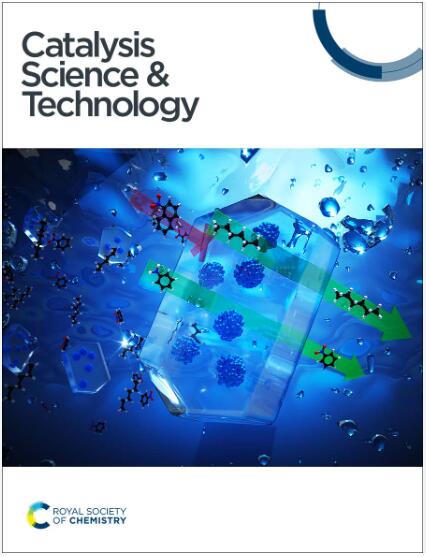探索α-二亚胺钯(ii)催化剂对乙烯(co)聚合的邻芳基卤素效应
IF 4.4
3区 化学
Q2 CHEMISTRY, PHYSICAL
引用次数: 0
摘要
最近,我们深入研究了邻芳基卤素效应对镍α-二亚胺催化乙烯聚合的影响,并发现了一些有趣的发现。在此基础上,我们进一步探讨了这种取代对钯α-二亚胺催化剂在乙烯(co)聚合中的分支密度和催化活性的影响。首先,我们合成并表征了一系列二苯甲酸α-二亚胺钯催化剂,其特征是丁基骨架上装饰有不同的邻芳基卤素取代基。这些催化剂在乙烯聚合中表现出较高的活性(105 g mol−1 Pd h−1),生成分子量可调(0.9-44.2 kg mol−1)的高支化聚乙烯(70-83/1000C)。值得注意的是,所得聚乙烯的分子量受到邻芳基卤素取代基大小的严重影响,其中较大的卤素有助于大幅增加。有趣的是,卤素取代对支化密度和催化活性的影响相对较小,可能是由于位阻和电子效应的抵消作用。在乙烯与MA的共聚反应中,我们观察到类似的趋势,即邻芳基卤素取代对分子量和分支密度的影响。此外,我们发现体积较大的卤素阻碍了MA的掺入,导致共聚物的MA插入率较低,但它们却惊人地提高了共聚活性。本文章由计算机程序翻译,如有差异,请以英文原文为准。
Exploring the o-aryl halogen effects of α-diimine Pd(ii) catalysts on ethylene (co)polymerization†
Recently, we delved into the impact of o-aryl halogen effects on nickel α-diimine-catalyzed ethylene polymerization and uncovered some intriguing findings. Building on this work, we now further explore the influence of such substitution on the performance of palladium α-diimine catalysts on both the branching density and catalytic activity in ethylene (co)polymerization. To begin, we synthesized and characterized a range of dibenzhydryl α-diimine palladium catalysts, featuring a butyl backbone adorned with diverse o-aryl halogen substituents. These catalysts exhibited high activity (level of 105 g mol−1 Pd h−1) in ethylene polymerization, yielding highly branched (70–83/1000C) polyethylenes with tunable molecular weights (0.9–44.2 kg mol−1). Significantly, the molecular weight of the resultant polyethylene was critically influenced by the size of the o-aryl halogen substituent, wherein larger halogens contributed to a substantial increase. Interestingly, the effect of halogen substitution on both the branching density and catalytic activity was relatively subtle, likely due to the counteracting forces of steric hindrance and electronic effects. In the copolymerization of ethylene with MA, we observed similar trends with respect to the influence of o-aryl halogen substitution on the molecular weight and branching density. Furthermore, we discovered that bulkier halogens hindered MA incorporation, resulting in copolymers with lower MA insertion ratios, yet they surprisingly boosted the copolymerization activity.
求助全文
通过发布文献求助,成功后即可免费获取论文全文。
去求助
来源期刊

Catalysis Science & Technology
CHEMISTRY, PHYSICAL-
CiteScore
8.70
自引率
6.00%
发文量
587
审稿时长
1.5 months
期刊介绍:
A multidisciplinary journal focusing on cutting edge research across all fundamental science and technological aspects of catalysis.
Editor-in-chief: Bert Weckhuysen
Impact factor: 5.0
Time to first decision (peer reviewed only): 31 days
 求助内容:
求助内容: 应助结果提醒方式:
应助结果提醒方式:


